As organizations continue to grow and expand their IT infrastructure, the decision between establishing an in-house Network Operations Center (NOC) or outsourcing NOC services becomes increasingly critical. This guide explores the various costs and considerations associated with both options, providing a comprehensive cost-benefit analysis to aid in making an informed decision.
Although some may assume an in-house NOC affords greater control and is therefore preferred, the right outsourced NOC operation can offer a suite of capabilities and efficiency advantages that dramatically tip the scale in terms of cost and value.
The control and assurance once afforded by keeping the NOC in-house have largely been upstaged by third-party service providers that have bridged those gaps and developed platform capabilities that simply wouldn’t be viable in-house investments due to low utilization.
With the same or better level of control and the significant cost-efficiencies gained by eliminating the need to build and maintain a platform and staff in-house, it’s vital for any company seriously considering an in-house NOC to carefully determine whether the added costs, effort, and responsibilities are worth it.
The Direct Costs of Building a NOC
Building an in-house NOC involves significant initial investments across several areas. From securing physical space and purchasing infrastructure to licensing essential software and integrating systems, these direct costs can be substantial. Understanding these costs is crucial for any organization considering this route.
Physical Space and Utilities
Establishing a dedicated space for an in-house NOC involves significant initial costs for leasing or purchasing physical space and ongoing utility expenses. The costs can vary significantly based on the location and size of the facility. For instance, leasing space in a metropolitan area can range from $500 to $1,000 per square foot.
This can mean an initial cost of $1,000,000 to $2,000,000 for a 2,000-square-foot NOC. Utilities, including electricity, cooling, and internet connectivity, can cost approximately $1,000 to $2,000 monthly, adding up to $12,000 to $24,000 annually. The need for uninterrupted power supply (UPS) systems and backup generators further increases utility-related expenses.
Infrastructure
Investment in servers, networking equipment, and other necessary hardware is critical for operating an in-house NOC. Initial costs for servers, switches, routers, and other networking equipment can range from $50,000 to $200,000.
This estimate includes high-performance servers for data processing and storage, as well as robust networking hardware to ensure reliable connectivity. Additional expenses for installation, configuration, and testing can add another $10,000 to $20,000. Over time, hardware may need upgrades or replacements, further increasing costs.
Software Licensing and Tools
Expenses for monitoring and management software and other necessary tools are a significant part of the initial investment. These tools include network monitoring solutions, ticketing systems, and security software. The cost of software licensing can range from $7 to $25 per device per month.
For a network with 1,000 devices, this can translate roughly to $7,000 to $25,000 per month or $84,000 to $300,000 annually. This cost includes subscription renewals and potential additional fees for premium features or support services.
Setup and Integration
The initial setup of equipment and software, as well as integration with existing systems, can be substantial—and it’s often one area that teams underestimate. Integration costs alone can range from $1 million to $5 million, depending on the complexity and size of the enterprise. This process includes configuring hardware, installing software, integrating with existing IT infrastructure, and ensuring all components work together seamlessly.
Companies often hire external consultants or specialists to manage this integration, adding to the costs. For example, integrating a new ticketing system with existing network management software might require specialized knowledge and extensive testing to ensure compatibility and reliability.
Maintenance and Repairs
Hardware repairs, software updates, and patches are inevitable. Maintaining the NOC's operational efficiency often requires a dedicated internal IT team. Maintenance costs can average $10,000 to $50,000 annually.
Regular maintenance includes replacing faulty hardware, applying software updates, and ensuring the overall health of the network. Unplanned repairs due to hardware failures or software bugs can further increase costs. Also, having a maintenance contract with vendors can help manage these expenses, but they come at a premium.
The Operational Costs of Building a NOC
Beyond the initial investments, operating an in-house NOC involves ongoing expenses that can significantly impact the organization's budget. These operational costs include recruiting and retaining specialized staff, managing salaries and overhead, and ensuring continuous training and development.
Recruiting and Retaining Specialized Staff
Finding and keeping skilled professionals can be costly and challenging. Recruitment costs can average $10,000 per hire, covering advertising the position, conducting interviews, and onboarding new employees.
Retention programs, which may include bonuses, professional development opportunities, and other incentives, can cost an additional $5,000 per employee annually. Retaining skilled NOC staff is crucial to maintain operational efficiency and minimize turnover-related disruptions.
Salaries and Overhead for NOC Staff
Employing network engineers, managers, and support staff is a significant ongoing expense. Salaries for NOC staff can average $80,000 per engineer, which increases by 30-40% when accounting for overhead costs such as insurance, taxes, 401k contributions, and other benefits, bringing the total to approximately $112,000 per engineer annually.
For a 24/7 NOC operation, a minimum of 10 to 12 staff members is required to ensure continuous coverage, leading to a total annual staffing cost of about $1.12 million to $1.34 million. This includes a combination of network engineers, NOC managers, and support staff. Additionally, specialized roles such as cybersecurity experts and data analysts may command higher salaries, further increasing the total cost.
Overtime or Additional Staffing for 24/7 Coverage
Ensuring around-the-clock operation often requires additional staff or overtime, which increases costs. Overtime costs can increase the salary budget by 10-15%, particularly for late-night or weekend shifts.
For example, if the annual salary budget is $1.2 million, overtime costs could add another $120,000 to $180,000. In some cases, hiring additional part-time staff to cover shifts can help manage these costs, but it still adds to the overall staffing budget.
Software Subscription Renewals
The ongoing costs of keeping the software tools updated and functional are crucial for maintaining a high-performing NOC. These costs can range from $50,000 to $200,000 annually, depending on the number of devices, the complexity of the software, and the need for additional features or support.
For example, network monitoring tools, incident management systems, and security software require regular updates to ensure they function optimally and protect the network from vulnerabilities. Subscription renewals ensure that the NOC has access to the latest updates, security patches, and technical support, which are essential for effective operations.
Training and Development
Continuous training programs and certifications for staff are necessary to keep up with the latest technologies and best practices. Training expenses can range from $5,000 to $10,000 per employee annually. This includes costs for attending industry conferences, obtaining certifications, and participating in training courses.
The annual training cost for a team of 10 engineers could range from $50,000 to $100,000. Ensuring that staff are well-trained helps improve the NOC's overall efficiency and effectiveness, as they are better equipped to handle complex issues and stay updated on the latest technological advancements.
Quality Control Team
Maintaining a quality control team is essential to ensure that NOC operations are effective and efficient. The cost of maintaining such a team can add another $50,000 to $100,000 annually. This team is responsible for monitoring performance metrics, identifying areas for improvement, and ensuring that the NOC meets established standards and service level agreements (SLAs).
Quality control involves regular audits, performance evaluations, and implementing best practices to enhance service delivery. Additionally, this team may work on developing and refining operational procedures, conducting root-cause analyses of incidents, and ensuring compliance with industry regulations and standards.
Scalability
Scaling up requires more infrastructure and higher licensing fees. For instance, adding 500 devices could increase licensing costs by $3,500 to $12,500 per month, depending on the type of software and licensing agreements. This translates to an additional $42,000 to $150,000 annually.
Moreover, scaling up infrastructure may require purchasing new servers, network equipment, and storage solutions, which can add another $50,000 to $200,000 in capital expenses.
Expanding the team requires additional recruitment and training efforts.
Recruitment costs can include hiring fees, background checks, and onboarding expenses, potentially costing an additional $50,000 to $100,000 annually. Training costs, as mentioned earlier, can range from $5,000 to $10,000 per employee. For a growing NOC, continuous training ensures that new staff members are up to speed with the latest technologies and procedures, maintaining the overall effectiveness of the team.
Control and Customization
Tailoring the NOC to specific business needs can incur significant costs, particularly if external consultants are required. Custom development costs can range from $100,000 to $500,000, depending on the scope and complexity of the project.
This includes the cost of developing custom software solutions, configuring existing tools to meet specific requirements, and integrating new systems with existing infrastructure. Engaging external consultants to oversee these projects can provide specialized expertise but adds to the overall expense.
Quality Control Team
Maintaining a quality control team is essential to ensure that NOC operations are effective and efficient. The cost of maintaining such a team can add another $50,000 to $100,000 annually. This team is responsible for monitoring performance metrics, identifying areas for improvement, and ensuring that the NOC meets established standards and service level agreements (SLAs).
Quality control involves regular audits, performance evaluations, and implementing best practices to enhance service delivery. Additionally, this team may work on developing and refining operational procedures, conducting root-cause analyses of incidents, and ensuring compliance with industry regulations and standards.
Data Security and Compliance
Investment in security measures to protect the NOC from cyber threats is essential. These costs can range from $50,000 to $200,000 annually, covering advanced security software, intrusion detection systems, firewalls, and regular security audits. Ensuring robust security helps protect sensitive data and maintain the integrity of the network operations.
Ensuring the NOC meets regulatory standards can be both time-consuming and expensive. Compliance audits and certification costs can range between $20,000 and $100,000 annually. This includes costs for external auditors, certification fees, and implementing necessary changes to meet regulatory requirements. Regular audits help ensure that the NOC adheres to industry standards and regulations, mitigating the risk of non-compliance penalties.
Long-Term Cost Considerations
When evaluating the long-term viability of an in-house NOC, it's important to consider the ongoing costs of maintaining and upgrading the infrastructure, as well as the potential impacts on the core business focus. These considerations can significantly influence the overall cost-benefit analysis.
Upgrading Infrastructure, Software, and Security
Keeping pace with technological advancements requires continuous investment. Upgrading infrastructure can cost $50,000 to $200,000 every few years. This includes replacing outdated servers, networking equipment, and storage solutions to ensure the NOC remains efficient and can handle increasing workloads.
Regular upgrades are necessary to support new features, improve performance, and maintain compatibility with evolving technologies. Additionally, software updates and upgrades, such as new versions of monitoring and management tools, are crucial for maintaining security and functionality. The cost of these software upgrades can vary, but they are essential to keep the NOC operating at peak efficiency.
Continuous upgrades to maintain security standards can add $10,000 to $50,000 annually. This includes investing in advanced security software, intrusion detection systems, firewalls, and regular security audits. As cyber threats evolve, it is crucial to keep the security infrastructure up-to-date to protect the NOC from potential breaches. Regularly updating cybersecurity measures helps mitigate risks and ensures the integrity and confidentiality of the network operations. Additionally, training staff on the latest security protocols and practices is essential to maintain a strong security posture.
Core Business Focus
Diverting resources from core business activities to manage an in-house NOC can be detrimental. Outsourcing allows companies to focus on their primary business objectives, such as product development, customer service, and market expansion. These opportunity costs can be significant but are harder to quantify directly.
For example, if key IT staff are occupied with NOC-related tasks, they may have less time to work on strategic projects that drive revenue and growth. By outsourcing NOC functions, companies can allocate more resources to initiatives that directly impact their bottom line, leading to increased productivity and competitiveness.
Vendor Dependance
Companies may face high switching costs or dependency on a specific vendor's technology. However, this issue is not as prominent with NOCs as with other IT services. Vendor lock-in can occur when a company becomes heavily reliant on a particular vendor's technology or services, making it difficult or expensive to switch to another provider.
This can lead to increased costs over time as the company may have limited negotiating power for better rates or service terms. To mitigate vendor dependence, companies should consider using standardized technologies and maintaining flexibility in their vendor contracts. This approach can help reduce the risk of lock-in and provide more options for future changes in service providers.
Contrast with Strategic NOC Outsourcing
Outsourcing NOC services provides an alternative approach that can offer several advantages over building an in-house NOC. Below, we explore the strategic benefits and potential cost savings of outsourcing NOC functions, using INOC's flexible and comprehensive pricing models as a case study.
Regular, Predictable Service Fees
Companies may face high switching costs or dependency on a specific vendor's technology. However, this issue is not as prominent with NOCs as with other IT services. Vendor lock-in can occur when a company becomes heavily reliant on a particular vendor's technology or services, making it difficult or expensive to switch to another provider.
Regular payments to the outsourcing provider are a fundamental part of outsourcing NOC services. These fees typically cover a comprehensive range of services, including network monitoring, incident management, troubleshooting, and regular maintenance.
At INOC, we offer flexible pricing models designed to align with your specific needs. Our primary method involves custom pricing based on the number of devices, projected activity levels, and required integration work. This approach ensures that pricing reflects actual NOC demand, often leading to significant long-term cost savings compared to traditional per-device-only pricing.
- Device-Based Pricing: This model calculates costs based on the types and quantities of devices (or “nodes”) needing monitoring and support. While simple and predictable, it can lead to paying for unutilized services and may not always offer the best value.
- Adaptive Operational Activity Pricing: This model sets a flat rate based on actual NOC activity levels across your supported infrastructure, measured over time. It aligns costs with actual service usage, which sets healthy incentives for network management and can be particularly beneficial for organizations with lower NOC utilization. Initial service prices are based on the number of devices and average monthly ticket volumes, with quarterly reassessments based on observed activity levels.
Additional Services
Beyond the basic contract, there may be additional charges for extra services that the company might require. These additional services can include custom reporting, enhanced monitoring services for particular applications or systems, additional security measures, or after-hours support. Companies may also request consultancy services for strategic planning or optimization of their network operations.
INOC's flexible pricing allows for these customizations, ensuring you get precisely the support you need as your requirements evolve. This enables companies to scale and customize their NOC operations without the need for internal development.
Transition
Transitioning to an outsourced NOC model involves several initial expenses. These transition costs include migrating existing data and systems to the outsourced provider’s infrastructure. At INOC, this process is managed smoothly, requiring several full-time equivalents (FTEs) for a period to ensure a seamless transition. The costs also cover training internal teams to work effectively with the outsourced NOC, ensuring seamless communication and integration between in-house staff and the external provider.
Additionally, there may be costs associated with setting up the new system, configuring it to match the company’s requirements, and any potential disruptions or downtime that occur during the transition period. Proper planning and execution during this phase are critical to minimize disruptions and ensure a smooth handover of responsibilities.
INOC Service Pricing, Explained
At INOC, we’re often asked whether our NOC service pricing is per alarm, per port, or based on similar asset criteria. While it certainly can be, and sometimes must be depending on a client’s needs, especially for organizations with many devices, our primary method involves custom pricing. This considers the number of devices, known or projected activity levels, and the required level of integration work.
We use these data points to establish an initial service price, which we later adjust based on observed activity levels over time. This method ensures that pricing aligns with the actual NOC demand, often resulting in significant long-term cost savings compared to traditional per-device-only pricing.
We offer either a preliminary budgetary quote or a detailed NOC service proposal upfront, depending on your needs and preferences.
To accurately estimate the cost, we generally require certain information from you, including:
- The number and types of devices (servers, routers, switches, firewalls, etc.) to be monitored and supported
- The complexity of your technology environment, including the number of locations and whether your infrastructure is on-premises, cloud-based, or a hybrid model
- The average number of tickets or incidents your team currently manages per month
The size of your current staff, their competencies, and the level of support you require - Any specific business objectives or requirements that the NOC service should address
With this information, we tailor a budgetary quote or a comprehensive proposal that aligns with your unique needs and budget.
Summary, Final Thoughts, and Next Steps
While some circumstances can make an in-house NOC advantageous or required, many companies can simply get better support and more capability for less overall cost by outsourcing with the right NOC partner (sometimes referred to as NOC as a Service).
Finding and hiring experienced staff and upgrading often underutilized technologies can steal resources and attention from revenue-generating projects. In many cases, investing in outsourced NOC support enables a higher ROI by providing all the NOC resources needed without the responsibility of managing and continually investing in them.
Want to learn more about our approach to outsourced NOC support? Contact us to see how we can help you improve your IT service strategy and NOC support or check out our other resources and download our free white paper below.
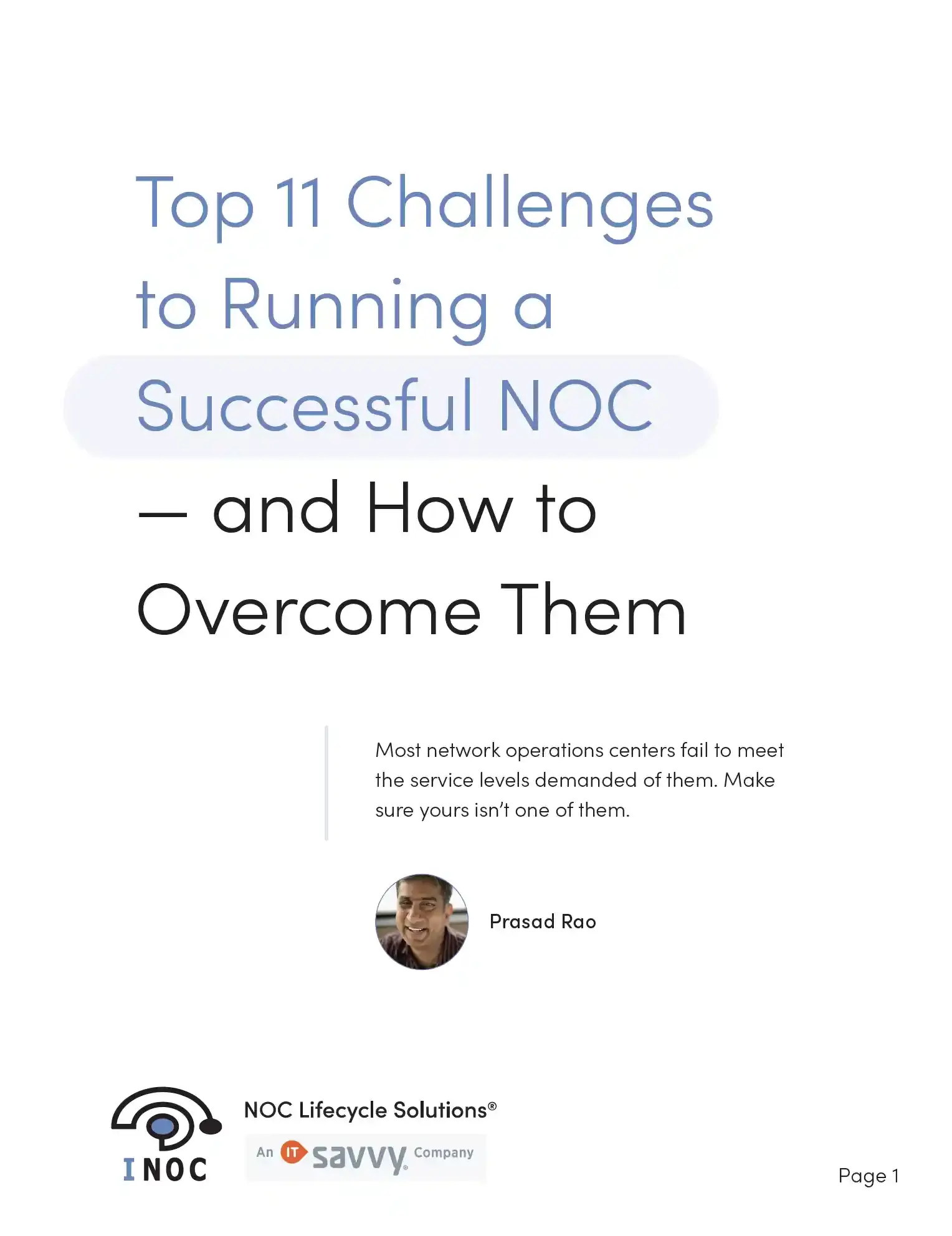
Free white paper Top 11 Challenges to Running a Successful NOC — and How to Solve Them
Download our free white paper and learn how to overcome the top challenges in running a successful NOC.






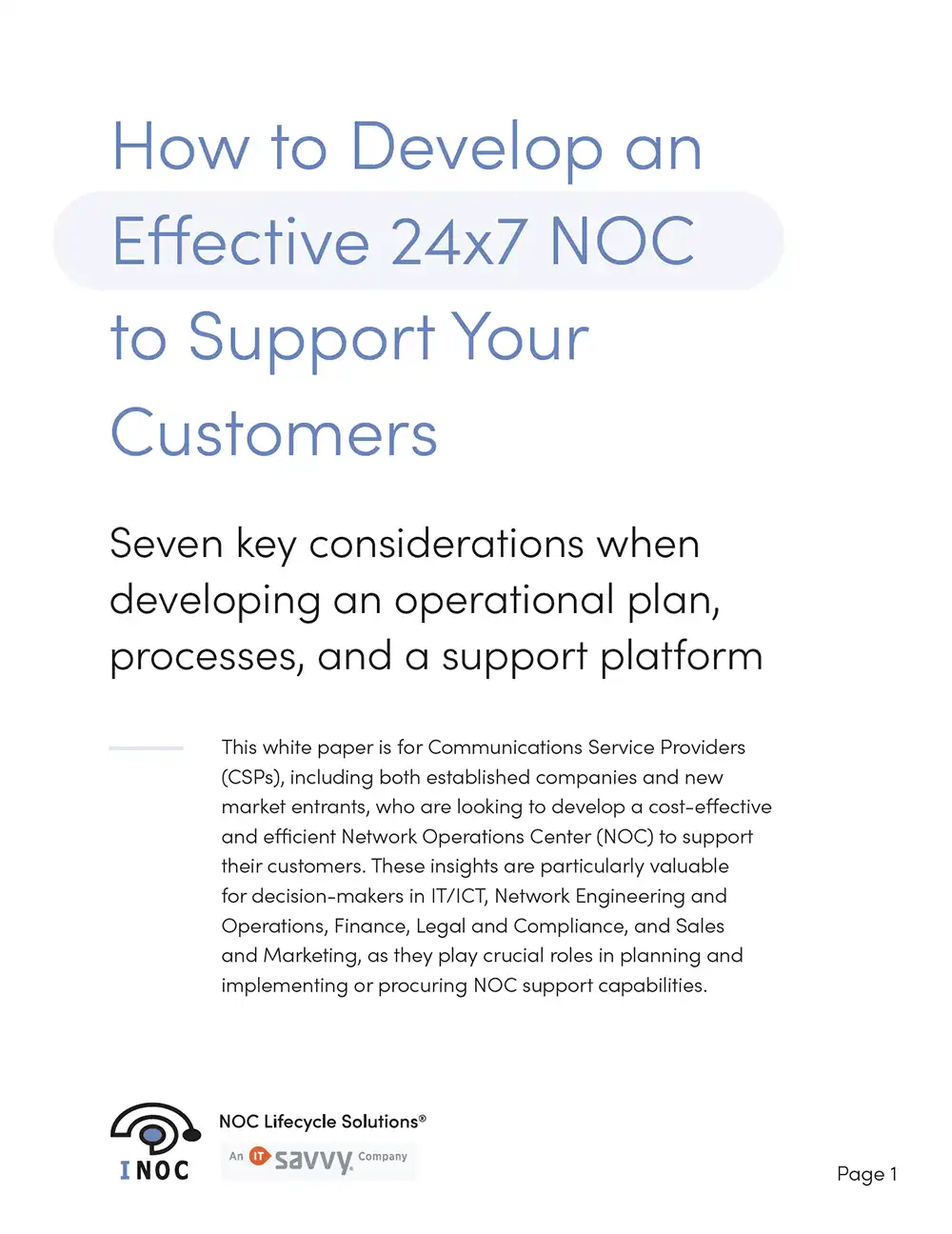

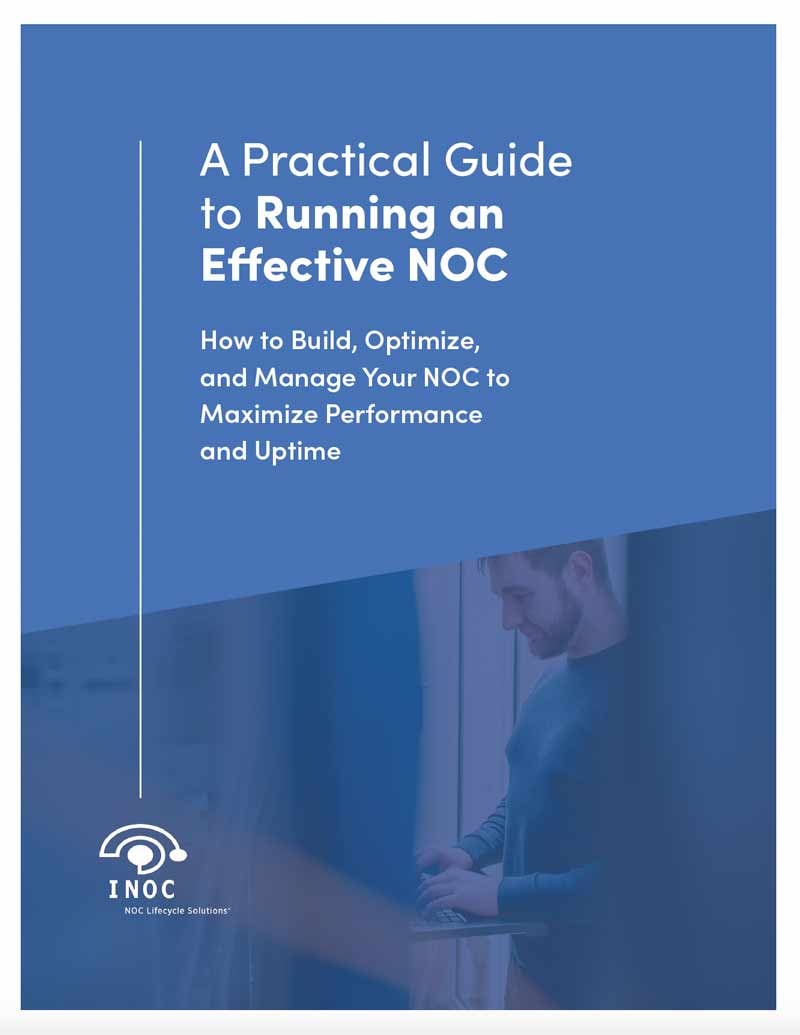
-images-0.jpg?height=2000&name=ino-WP-NOCPerformanceMetrics-01%20(1)-images-0.jpg)



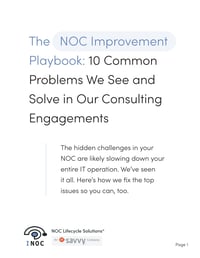

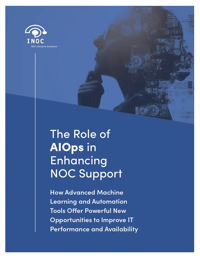

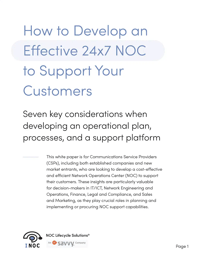
-images-0.jpg?width=200&height=259&name=ino-WP-NOCPerformanceMetrics-01%20(1)-images-0.jpg)